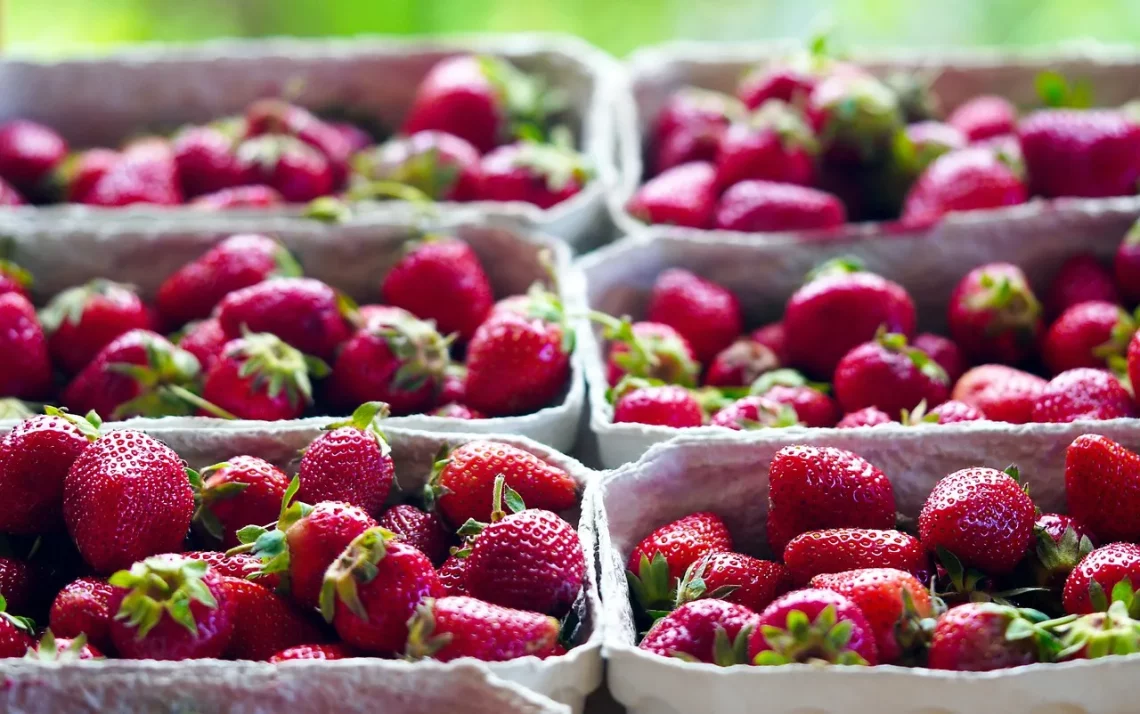
Exploring the Benefits and Cultivation of Seedless Strawberries
Strawberries have long been celebrated as a delicious and versatile fruit, cherished for their sweet flavor and vibrant color. As an integral part of many culinary delights, from desserts to salads, they hold a beloved place in the hearts of fruit lovers worldwide. However, the emergence of seedless varieties has sparked a new wave of interest among gardeners and consumers alike. Seedless strawberries not only offer unique advantages but also present exciting opportunities for cultivation. Their appeal lies not just in the eating experience but also in their potential for ease of growth and reduced labor in harvesting.
As the quest for seedless fruit continues, advancements in agricultural practices and genetic research have paved the way for the development of these intriguing varieties. This evolution in fruit cultivation reflects a broader trend toward convenience and accessibility in food production. With the growing demand for innovative agricultural solutions, seedless strawberries might just be the next big thing in gardening and fruit consumption. As we delve deeper into the world of seedless strawberries, we will explore their benefits, cultivation techniques, and the future of this fascinating fruit.
The Advantages of Seedless Strawberries
Seedless strawberries offer a myriad of advantages that appeal to both consumers and cultivators. One of the most significant benefits is their convenience; without seeds, these strawberries provide a smoother, more pleasant eating experience. This characteristic is particularly appealing to families with young children, as it eliminates the concern of choking hazards associated with traditional seeded fruits.
Moreover, seedless varieties tend to have a more uniform shape and size, making them visually appealing for presentation. When used in desserts or salads, their consistent appearance enhances the overall aesthetic of dishes, making them ideal for special occasions and gatherings. The lack of seeds also allows for easier and more efficient processing, whether for freezing, jam-making, or other culinary uses.
From a cultivation perspective, seedless strawberries can offer advantages in terms of yield and labor. Farmers may find that these varieties produce more fruit per plant compared to their seeded counterparts, leading to increased profitability. Additionally, the harvesting process can be simplified, as workers do not have to navigate around seeds when picking the fruit. This efficiency can result in reduced labor costs and less time spent in the field, benefiting growers and contributing to improved sustainability in strawberry production.
Furthermore, seedless strawberries can be more appealing in terms of storage and transport. Their denser flesh and lack of seeds mean they are less prone to bruising and damage during shipping, ensuring that they arrive at their destination in optimal condition. This resilience can lead to higher sales and reduced waste, making seedless strawberries an attractive option for retailers.
Growing Seedless Strawberries
Cultivating seedless strawberries requires a slightly different approach than traditional varieties, but the rewards can be substantial. The first step in growing these unique fruits is selecting the right cultivar. There are several seedless strawberry varieties available, each with its own characteristics and suitability for different climates. Researching and choosing the best variety for your local growing conditions is crucial for successful cultivation.
Preparation of the soil is essential for growing healthy strawberries. These plants thrive in well-draining soil with a pH level between 5.5 and 6.5. Prior to planting, it’s advisable to enrich the soil with organic matter, such as compost or well-rotted manure, to enhance fertility and improve drainage. Raised beds can also be beneficial, as they allow for better air circulation and help prevent root rot.
When planting seedless strawberries, it’s important to space them adequately to ensure proper airflow and reduce the risk of disease. Generally, a spacing of 12 to 18 inches between plants is recommended. Watering is another critical aspect of strawberry cultivation; these plants require consistent moisture, particularly during their fruiting stage. However, care must be taken to avoid waterlogging, which can harm the roots.
Mulching can be an effective technique to retain soil moisture and suppress weeds. Organic mulches, such as straw or wood chips, not only help with moisture retention but also contribute to soil health as they decompose over time. Regular monitoring for pests and diseases is essential, as strawberries can be susceptible to various issues, including aphids, spider mites, and fungal infections.
Fertilization plays a vital role in the growth and fruiting of seedless strawberries. A balanced, slow-release fertilizer can provide the necessary nutrients throughout the growing season. Additionally, pruning the plants can promote better air circulation and sunlight penetration, leading to healthier fruit production.
As the season progresses, the anticipation of harvesting seedless strawberries builds. With proper care, these plants can yield a bountiful crop, providing fresh and delicious fruit for enjoyment in a variety of culinary applications.
Using Seedless Strawberries in the Kitchen
The culinary versatility of seedless strawberries knows no bounds. Their sweet, juicy flavor and attractive appearance make them a favorite ingredient in many recipes. From smoothies to desserts, salads to sauces, seedless strawberries can elevate a dish while offering a delightful taste experience.
One popular way to utilize seedless strawberries is in smoothies. Their smooth texture blends seamlessly with other ingredients, creating a refreshing drink that’s both nutritious and delicious. Pairing them with yogurt, banana, or spinach can enhance the flavor and provide additional health benefits, making for a perfect breakfast option or post-workout snack.
Seedless strawberries shine in desserts as well. From classic strawberry shortcakes to elegant tarts, these fruits can be the star of any sweet creation. Their lack of seeds allows for a smoother filling in pies and cakes, ensuring a delightful mouthfeel. Simply macerating seedless strawberries with a bit of sugar can create a quick and easy topping for ice cream or pancakes, adding a burst of flavor to any dish.
In savory dishes, seedless strawberries can bring a unique twist. Adding them to salads can provide a refreshing contrast to greens and other vegetables. A spinach salad topped with seedless strawberries, nuts, and a balsamic vinaigrette can be both visually appealing and delicious.
For those interested in preserving the bounty of seedless strawberries, they can be easily transformed into jams, jellies, or sauces. The absence of seeds simplifies the canning process, allowing for a smooth and spreadable product. Homemade strawberry jam can be a delightful addition to breakfast or a thoughtful gift for friends and family.
In summary, the culinary possibilities with seedless strawberries are virtually endless. Their versatility, combined with their appealing texture and flavor, makes them a valuable addition to any kitchen.
The Future of Seedless Strawberry Cultivation
As the agricultural landscape evolves, the future of seedless strawberry cultivation looks promising. With advancements in genetic research and breeding techniques, the development of new seedless varieties is likely to continue. These innovations can lead to strawberries that are not only seedless but also more resistant to disease and pests, improving overall yield and sustainability.
Consumers are increasingly seeking convenience in their food choices. The demand for seedless fruits reflects this trend, as people look for options that require less preparation and offer a more enjoyable eating experience. This shift in consumer preferences may drive further research and investment in seedless varieties, ensuring that they remain a staple in grocery stores and farmers’ markets.
Moreover, the focus on sustainable farming practices is likely to shape the future of seedless strawberry cultivation. Growers will continue to seek methods that minimize environmental impact, such as organic farming and integrated pest management. By adopting these practices, farmers can produce seedless strawberries that are not only delicious but also environmentally friendly.
As the knowledge surrounding seedless strawberries expands, home gardeners will find it easier to cultivate these unique varieties. Educational resources, workshops, and community gardening initiatives can empower individuals to grow their own seedless strawberries, fostering a deeper connection to food and gardening.
In conclusion, the future of seedless strawberry cultivation holds great promise. With ongoing advancements in agricultural practices and a growing consumer interest in convenience and sustainability, seedless strawberries are likely to become an increasingly popular choice for both growers and consumers alike.
**Disclaimer: This article is for informational purposes only and does not constitute medical advice. Please consult a healthcare professional for any health-related concerns.**




